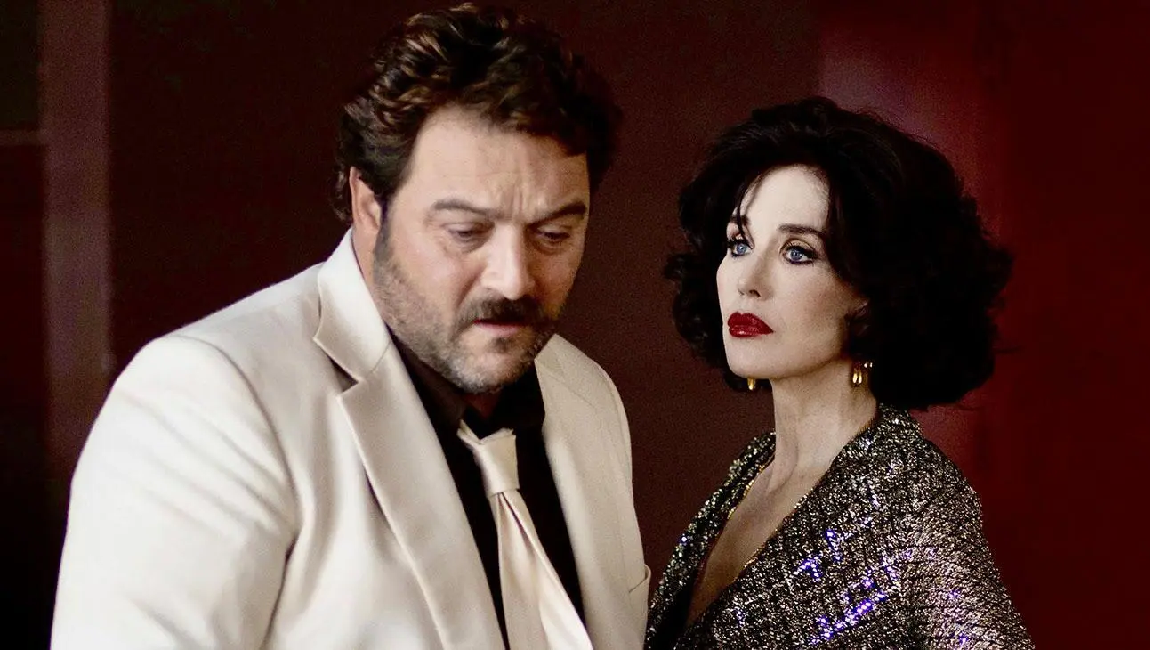Ozon’s frivolous Fassbinder homage doesn’t quite engrave much that is substantive or memorable.
Rainer Werner Fassbinder’s tragically short and tormented life has been the subject of much fascination — not merely in the realm of Germany’s tumultuous avant-garde seventies, but especially with respect to the contentious boundary between art and artist, persona and person. His prolific if compact career, spanning 40 feature films, two television series, and a multitude of theatrical plays, closely situates the personal within the political, enmeshing the woes and dashed hopes of embittered and loveless protagonists amidst the fiery melodramas of an alienated, counter-cultural post-war Berlin. And vice versa, to some degree: with the stage the poet’s oyster, and eyes and tears the microcosms of a false utopia undone, the Fassbinderian hero (or heroine) frequently behaves otherwise, their neurotic and lachrymose mannerisms belying an autobiographical tussle between desire and lack, never quite given to gratifying resolution.
Fassbinder’s seminal 1972 work, The Bitter Tears of Petra von Kant, charts with breathtaking economy the sadomasochistic relationship between two women, one a miserably egomaniacal fashion designer, the other her mute, subservient maid. The exchange between the two is simultaneously taut and resplendent; a monologue, for the most part, informs our auditory understanding of Petra’s violent outbursts and self-pitying musings while Marlene — Petra’s maid — simultaneously fills the role of voyeur, unseen, unheard, but not unknowing of her mistress’ domiciled artistic and social lives. The film’s staged quality, of having just one location for all solipsistic egoism to run loose, serves not just itself well, but also the attempts to recreate, reinterpret, pastiche, and parody it in the past half-century. In 2020, Oskar Roehler’s Enfant Terrible directly fictionalized Fassbinder’s rise to fame and fall from infamy, serving a kitschy but no less engaging cocktail of barbiturates and unfulfilled passion with keenly Brechtian clarity.
Just two years later, France’s very own enfant terrible, François Ozon (though having mellowed significantly from two decades prior), has followed through with his own rendition of Tears; the feminine Petra, swapped with the masculine Peter, retains much of her sordid interpersonal cynicism for Peter von Kant, a not-quite-pastiche, not-quite-parody of the Fassbinder tradition if ever there was one. Peter (Denis Ménochet), a thinly-veiled interpretation of the portly German filmmaker, resides with the lanky Karl (Stefan Crepon), waiting on Peter in a state of perpetual brooding while the master fumbles and flirts with disasters from his ascending career. A lifetime of production drama, collaboration anxieties, and homoerotic rivalries has thoroughly hardened the director to a point in his life where it is nothing but stage direction: objects to be positioned, men and women to be handled, desire to be waxed and waned as the script sees fit. Amir (Khalil Ben Gharbia), a fledgling Arabian actor, soon enters the duo’s life by chance, setting in motion an already volatile and alcohol-fueled dance toward self-destruction; the many bitter tears, indeed.
Sadly, Ozon’s gender-flipped version of the pristinely acute original doesn’t quite engrave much that is substantive or memorable into its frivolous homage. Despite its huge star billing — in particular, Isabelle Adjani as Peter’s actress and friend Sidonie, alongside Hanna Schygulla, back from her role in Tears (in which she played Amir’s female counterpart, Karin) as Peter’s mother — Peter von Kant offers little beyond the mild anticipation of appraising, from a distance, the permutation of a distinctive classic. Its sequences are instead distinctive of Ozon’s filmography, cut and framed with greater urgency and intensity, and liberally utilizing a shot-reverse-shot template to achieve a comparatively truncated final product. As a standalone work, hypothetically, much of the film entices with the chic aestheticization of history within; as it stands, this aestheticization no doubt brings with it the inseparable legacies of psychosexual misery and queer identification which few, and certainly not Ozon at his most casually whimsical, can cleanly divest themselves of.







